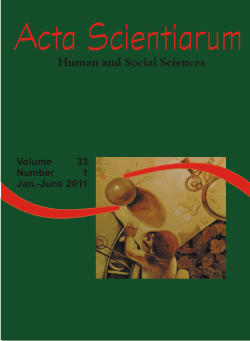<b>Speciesism and the perception of animals</b> - doi: 10.4025/actascihumansoc.v33i1.7827
Keywords:
speciesism, ethics, environment
Abstract
Are there limits to how human beings can legitimately treat non-human animals? Or may we treat them any way we please? If there are limits, what are they? Are they sufficiently strong, as some people suppose, not to lead us into speciesism and to reduce, if not eliminate altogether, our use of non-human animals in “scientific” experiments for our benefit? To completely evaluate this issue, I shall contrast it to two different questions: are there limits to how we can legitimately treat rocks? And: are there limits to how we can legitimately treat other human beings? These questions are linked to the concept of speciesism, a neologism created by Richard Ryder in 1970 to describe the relationship of prejudice by one species towards another. The most common form of speciesism is the animal kind, whereupon one species (Human beings) have a prejudiced relationship with another species (non-human beings). This work aims to explain how we, human beings, perceive other species and how we act with regard to others.Downloads
Download data is not yet available.
Published
2011-04-06
How to Cite
Coltro, F. L. Z., & Ferreira, Y. N. (2011). <b>Speciesism and the perception of animals</b> - doi: 10.4025/actascihumansoc.v33i1.7827. Acta Scientiarum. Human and Social Sciences, 33(1), 75-80. https://doi.org/10.4025/actascihumansoc.v33i1.7827
Issue
Section
Philosophy and Education
DECLARATION OF ORIGINALITY AND COPYRIGHTS
I Declare that current article is original and has not been submitted for publication, in part or in whole, to any other national or international journal.
The copyrights belong exclusively to the authors. Published content is licensed under Creative Commons Attribution 4.0 (CC BY 4.0) guidelines, which allows sharing (copy and distribution of the material in any medium or format) and adaptation (remix, transform, and build upon the material) for any purpose, even commercially, under the terms of attribution.
Read this link for further information on how to use CC BY 4.0 properly.























